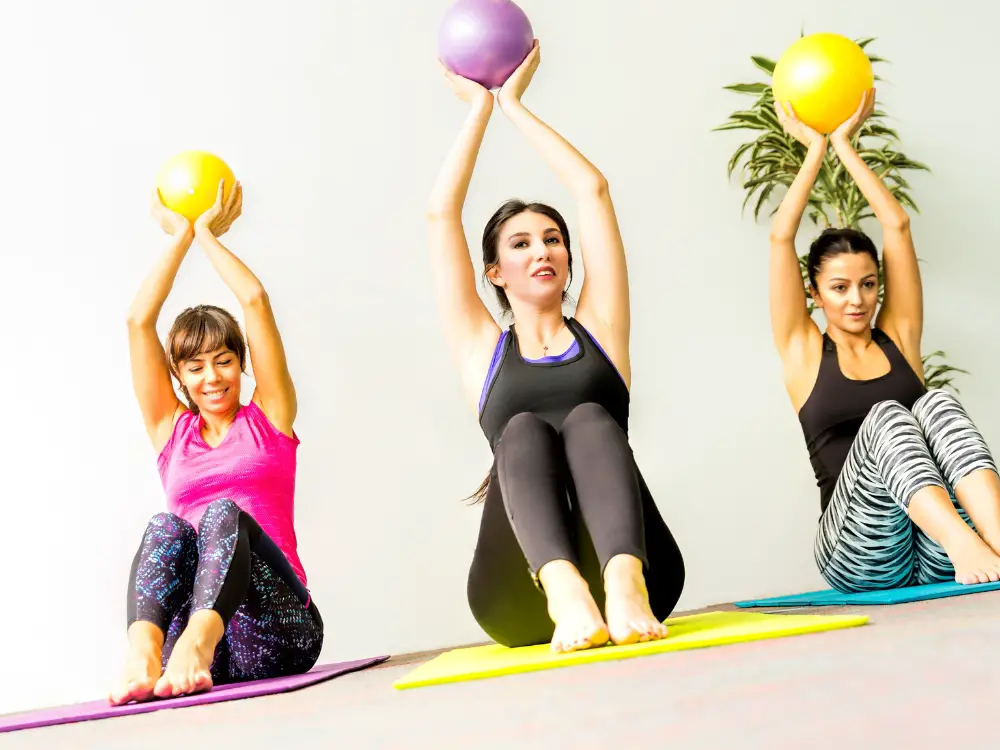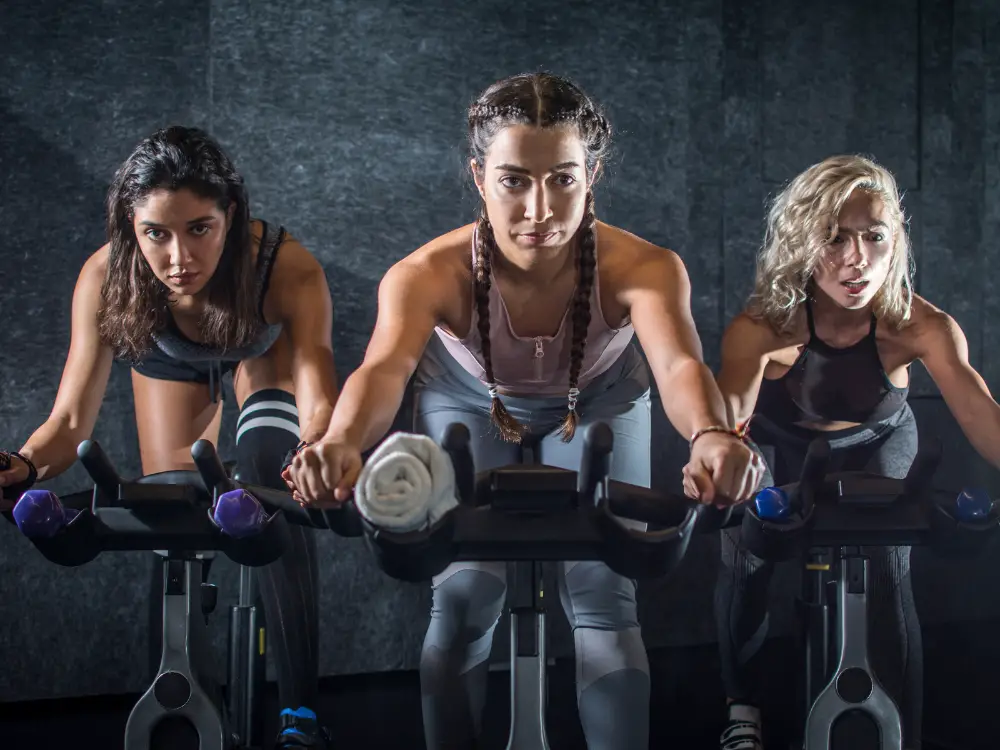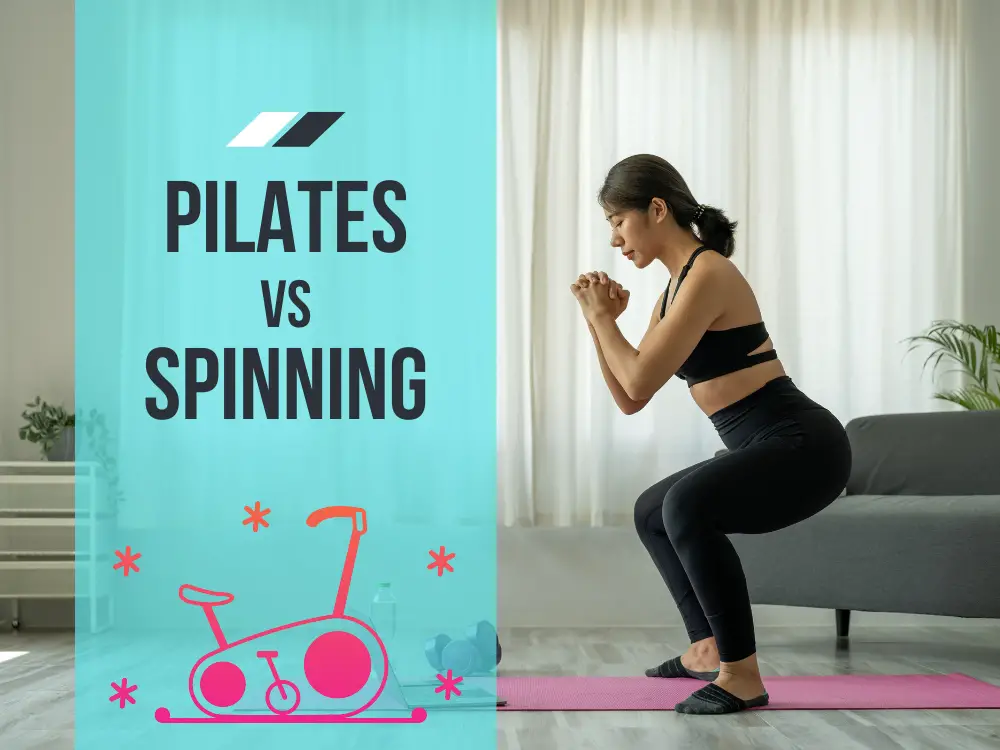Physical fitness is an essential aspect of a healthy lifestyle, and there are various ways to achieve it.
Two popular workout methods are Pilates and Spinning, each offering unique benefits. However, it can be challenging to choose between them, especially for beginners.
In this article, we will compare and contrast Pilates vs Spinning as workout methods, highlighting their benefits, differences, and which one may be a better fit for different types of people. So, keep on reading …
Pilates: What is it?
Pilates is a low-impact exercise that focuses on strengthening the core muscles, improving flexibility, and developing better posture. The workout method was developed by Joseph Pilates in the early 20th century and has gained popularity over the years.
Pilates exercises involve controlled movements that engage the mind and body, emphasizing breathing techniques, and precise movements.

What are the Benefits of Pilates?
Pilates offers various benefits, including:
Improved Core Strength: Pilates exercises target the core muscles, including the abs, back, and hips. By strengthening these muscles, Pilates helps improve overall body stability, balance, and posture.
Better Flexibility: Pilates exercises involve a range of movements that stretch the muscles, improving flexibility and mobility.
Reduced Stress: Pilates involves controlled breathing techniques that help reduce stress levels, improving mental clarity and focus.
Injury Prevention: Pilates exercises are low-impact, making them suitable for people recovering from injuries or with limited mobility.
Improved Body Awareness: Pilates exercises require concentration and precision, helping to improve body awareness and control.
Spinning: What is it?
Spinning is an indoor cycling workout that simulates outdoor cycling. The workout method was developed in the 1980s by Johnny Goldberg, a South African endurance athlete.
Spinning classes involve stationary bikes that participants use to pedal through various terrains, including hills, flats, and sprints. The workouts are accompanied by upbeat music, and instructors guide participants through different resistance levels and positions.

What are the Benefits of Spinning?
Spinning offers several benefits, including:
Cardiovascular Health: Spinning is a high-intensity workout that raises heart rate and improves cardiovascular health.
Burn Calories: Spinning burns a significant amount of calories, making it an effective workout for weight loss.
Improved Leg Strength: Spinning primarily targets the leg muscles, including the quads, hamstrings, and calves, helping to improve leg strength and endurance.
Low-Impact: Spinning is a low-impact workout, making it suitable for people with joint pain or recovering from injuries.
Community: Spinning classes offer a community environment, making it a fun and social workout experience.
Pilates vs Spinning: What are The Main Differences?
While both Pilates and Spinning offer various benefits, there are some differences between them. Here are some notable differences:
Focus: Pilates focuses on developing core strength and improving flexibility, while Spinning is primarily a cardiovascular workout that targets leg muscles.
Equipment: Pilates exercises can be performed on a mat or with specialized equipment, while Spinning requires a stationary bike.
Intensity: Pilates is a low-impact workout with controlled movements, while Spinning is a high-intensity workout with faster-paced movements.
Music: Pilates exercises do not typically use music, while Spinning workouts are accompanied by music that helps set the pace and atmosphere.
Community: While both Pilates and Spinning can be performed individually, Spinning classes offer a community environment with group participation, while Pilates can be performed individually or in small groups.
Which One is Better for You: Pilates or Spinning?
Choosing between Pilates and Spinning ultimately depends on an individual’s personal fitness goals and preferences.
Pilates is an excellent workout for individuals seeking to improve their core strength, flexibility, and posture. It is also suitable for those recovering from injuries or with limited mobility.
Spinning, on the other hand, is an ideal workout for individuals looking to improve their cardiovascular health, burn calories, and build leg strength and endurance.
For individuals who want to lose weight, Spinning may be a better option as it burns more calories than Pilates. However, Pilates is an effective workout for toning the body, improving posture, and developing better body awareness and control.
Both Pilates and Spinning offer unique benefits, and individuals can incorporate them into their fitness routine depending on their goals. Some individuals may choose to alternate between Pilates and Spinning to achieve a well-rounded workout routine.
Conclusion
Pilates and Spinning are popular workout methods that offer unique benefits. Pilates is an excellent workout for developing core strength, improving flexibility, and developing better posture, while Spinning is ideal for improving cardiovascular health, building leg strength and endurance, and burning calories.
Choosing between Pilates vs Spinning ultimately depends on an individual’s fitness goals and preferences. To achieve the best results, individuals can incorporate both methods into their workout routine. It is essential to consult with a fitness professional before starting any exercise routine to ensure it is safe and effective for their specific needs.

